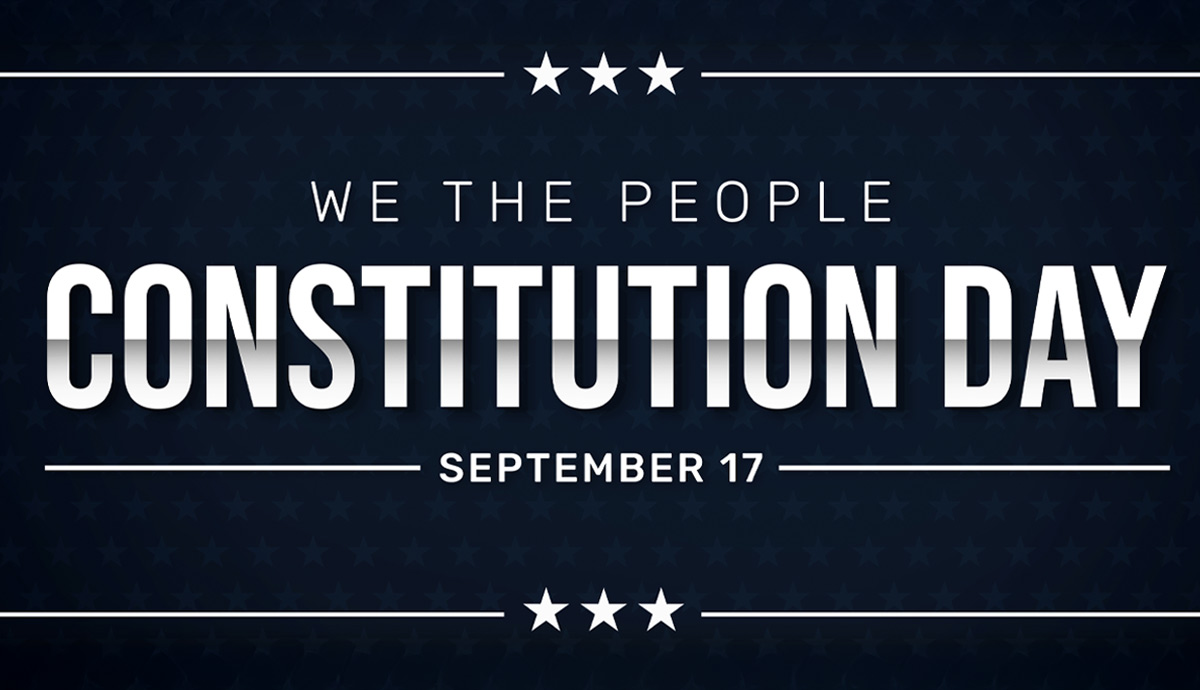
What once began as a celebration of citizenship through “I Am an American Day” has become a broader observance that emphasizes the enduring significance of the Constitution as the foundation of American democracy. Today, Constitution Day serves as a reminder of the rights and responsibilities of citizenship and an opportunity to reflect on the Constitution and its ongoing relevance in shaping the country’s future.
Origins and Early Observance

While the new United States celebrated the signing of the Constitution with parades, public readings (to account for the illiteracy of the time), and celebrations, there was no movement for national remembrance or observations in the following decades. This sentiment shifted following the American Civil War in the late 19th century when the nation underwent rapid industrialization, urbanization, and a massive influx of European immigrants. Sudden questions about American identity among prominent civic organizations and educators led to reevaluating the United States Constitution’s role in American citizenship and the country’s future.
The earliest efforts to celebrate the Constitution came on the 100th anniversary of its signing in 1877 when a group of schoolchildren in New York City organized a modest yet first-of-its-kind celebration. The event consisted of recitations, essays, and discussions about the nation’s founding document. Once local newspapers ran the story, many other schools copied the idea in the following years.
As the idea of a Constitution Day gained traction within schools across the nation, patriotic groups such as the Sons and, later, the Daughters of the American Revolution began promoting the idea of a national day of remembrance. Its members took Constitution Day beyond the confines of the schools and into the broader public consciousness by distributing educational materials on the US Constitution and lobbying for official recognition.
The most notable supporter was none other than the influential newspaper mogul William Randolph Hearst. By the early 1900s, the newspaperman was using his media outreach to advocate for the establishment of Constitution Day. He argued that it was essential for all Americans to have a deeper understanding of the Constitution so they could recognize and protect their freedoms and rights. Yet, despite these efforts, those on Capitol Hill did not budge.
Citizenship Day Evolves

By the 1930s and 1940s, the world was emerging from the greatest economic depression it had ever seen and heading toward an even more troubling global war. To challenge the perceived faltering national unity where recent immigrants took sides with the belligerents of faraway conflicts, the US Congress passed a resolution designating the third Sunday in May as the official “I am an American Day.”
The premise was to honor citizens, born or naturalized, by celebrating Americans’ diverse backgrounds and promoting a sense of national pride. The day to promote the importance of citizenship was seen as patriotic at a time of global conflict, and many cities and towns across the country held public ceremonies, parades, and speeches.
While many saw “I Am an American Day” as a step in the right direction, the end of the Second World War and America’s new role as a superpower and beacon of democracy around the world, the national sentiment once more shifted toward making the observance more about highlighting the rights and responsibilities all citizens have according to the US Constitution.
In 1952, Congress moved the holiday from May to September 17 and rebranded it as “Citizenship Day.” The date, which marks the anniversary of the signing of the US Constitution, was selected to appease those who called for a stronger connection to the founding document. Where the wartime “I Am an American Day” celebrated citizenship and unity among the American people, the new “Citizenship Day” was designed to stress the responsibilities and rights of the said citizenship.
Falling at a time when students return to school from summer break also allowed schools to dedicate the day toward learning opportunities emphasizing the Constitution, the principles of American democracy, and civil rights.
Constitution Day

However, while the broader focus on the evolving nature of citizenship, the responsibilities that come with it, and the constitutional rights that the Constitution protects made the holiday relevant to contemporary issues, some educators yearned for more.
Spurred on by calls from civic leaders and teachers’ unions nationwide to further link the celebration to the Constitution, in 2004, Democratic Senator Robert Byrd of West Virginia took up the cause. A staunch advocate for constitutional education and a day explicitly dedicated to the Constitution itself, the senator introduced an amendment to an omnibus spending bill that would designate the September 17 holiday as “Constitution Day.” Motivated by a belief that Americans required a deeper understanding of the founding document and its role in their lives, Byrd added a provision to his amendment requiring all educational institutions receiving federal aid to hold educational programs catered to the study of the Constitution on its newly designated holiday.
Congress passed the amendment officially renaming “Citizenship Day” to “Constitutional Day and Citizenship Day” in 2004. While it is not a federal holiday in the same sense as Presidents’ Day or Labor Day, the amendment’s stipulation and financial component guarantee school participation across the academic landscape, ensuring its observance with various educational activities and events across the country’s schools, universities, and government institutions.










